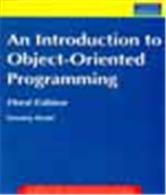Introduction to Object-Oriented Programming

|
Author(s):
Author:
Timothy Budd
- ISBN:9788131717264
- 10 Digit ISBN:8131717267
-
Price:Rs. 880.00
- Pages:648
- Imprint:Pearson Education
- Binding:Paperback
- Status:Available
-
|
In An Introduction to Object-Oriented Programming, Timothy Budd provides a language-independent presentation of object-oriented principles, such as objects, methods, inheritance (including multiple inheritance) and polymorphism. Examples are drawn from several different languages, including (among others) C++, C#, Java, CLOS, Delphi, Eiffel, Objective-C and Smalltalk. By examining many languages, the reader is better able to appreciate the general principles that lie beyond the syntax of the individual languages.
|
Table of Content
1. Thinking Object-Orineted.
2. Layers of Abstraction.
3. Object-Oriented Design.
4. Classes and Methods.
5. Messages, Instances, and Initialization.
6. A Case Study: The Eight Queens Puzzle.
7. A Case Study: A Billiards Game.
8. Inheritance and Substitution.
9. Case Study - A Card Game.
10. Subclasses and Subtypes.
11. Static and Dynamic Behavior.
12. Implications of Substitution.
13. Multiple Inheritance.
14. Polymorphism and Software Reuse.
15. Overloading.
16. Overriding.
17. The Polymorphic Variable.
18. Generics.
19. Container Classes.
20. A Case Study: The STL.
21. Frameworks.
22. An Example Framework: TheAWT and Swing.
23. Object Interconnections.
24. Design Patterns.
25. Reflection and Introspection.
26. Network Programming.
27. Implementation.
A. Source for the Eight-Queens Puzzle.
B. Source for the Billiards Game.
C. Source for the Solitaire Game.
Glossary.
|
Salient Features
- NEW! Extensive comparisons between C++, C# and Java.
- NEW! Integration and utilization of UML notation and diagrams.
- NEW! An expanded discussion of the subclass/subtype distinction.
- NEW! An in-depth exploration of multiple inheritances as it is used in several recent object-oriented languages, including multiple interfaces and nested classes.
- NEW! Examples drawn from a wider range of languages, including Eiffel, CLOS, and Python in addition to the mainstream languages.
- NEW! A greatly expanded exploration of the various forms of polymorphism found in object-oriented languages.
- NEW! An investigation of the way polymorphism is used in the creation of software frameworks.
- NEW! Case studies that explore the application of polymorphism in the STL in C++ and the AWT in Java.
|
|
|
|
|